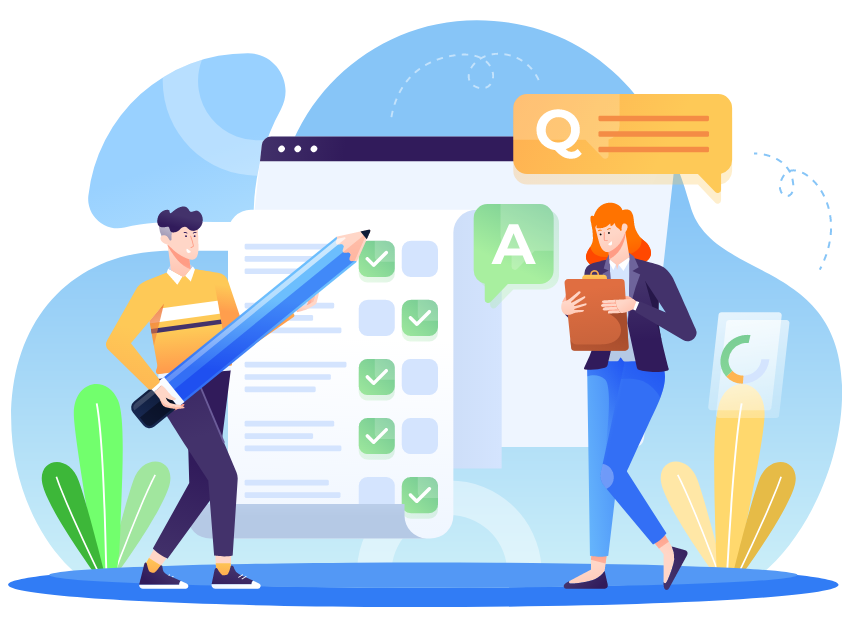The eCommerce industry has allowed sellers to run their businesses without the cost of a brick-and-mortar presence. However, the low barriers to entry in eCommerce do not mean that businesses do not have any expenses.

Businesses in the eCommerce industry have to pay a customer acquisition cost (CAC) to get one customer to purchase. The average CAC in eCommerce is $70 per customer. A customer retention strategy is, therefore, critical to eCommerce businesses to minimize costs and stay profitable in the long run.
What is the meaning of customer retention?
Customer retention means having customers repeat purchases from the business. Businesses spend a lot on advertisements to get customers to make their first purchase. But the story doesn’t end here. After the first purchase, it is up to the business to ensure that the customer is satisfied with their purchase and returns to purchase other products or the same product from the seller.

A retained customer ensures the business’s investment in acquiring the customer reaps benefits over time. This way, the business does not have to spend so much on acquiring new customers every time.
Customer retention management strategies
Customer retention management is an important component of any business’s strategy. This is because the higher the percentage of customers that return for purchases, the lesser the customer acquisition cost over time. But loyal customers don’t only mean lesser costs. It means improved word-of-mouth advertising and increased brand value.

When the customer churn rate is high, it is up to the management to assess the reasons behind the low retention to develop appropriate strategies. Not every business can benefit from a cookie-cutter approach to customer retention strategies. So, for some, loyalty programs would be beneficial, but for other businesses, a retention strategy like investing in better customer service would reap benefits.
So, the first step for businesses is to determine the issues the customers are facing and minimize these issues before investing in incentivized loyalty strategies.
What is customer retention?
Customer retention is a concept in business that means the ability of a business to get customers to keep making purchases over a specified period. However, customer retention rates and the period over which customer retention is calculated vary from business to business.

For instance, businesses with an expensive product line like diamond jewelry cannot expect customers to shop for jewelry every month. On the other hand, if customers do not return to a grocery business for more than a few months, they are considered lost customers. For this reason, businesses that deal with high involvement and expensive products have retention strategies like sending greeting cards or messages on birthdays and anniversaries.

But why do businesses invest in loyalty programs when they can simply market to new customers? Customer retention is important to businesses because it helps minimize business expenses spent on customer acquisition. When customers trust a business and become loyal to it, they don’t need to be pushed again and again to make the purchase.
Since customer retention is a relational concept, it can be calculated using metrics like revenue churn rate, purchase frequency rate, and customer churn rate.
Important customer retention metrics
There are a few metrics that help assess the success of customer retention management strategies. Here are some of these metrics:
Customer Churn Rate
One of the most commonly used metrics is the customer churn rate which is the percentage of customers who do not purchase from the business over a specific period.
Repeat Customer Rate
This metric is calculated by dividing the number of return customers by the total number of customers. It is one of the key metrics to calculate customer satisfaction.
Purchase Frequency Rate
The success of customer loyalty programs can be calculated through the purchase frequency rate. The purchase frequency is calculated by dividing the number of orders by the number of unique purchases.
Strategies to increase customer retention
Increasing customer retention is not a one-size-fits-all strategy. If one strategy works for one business, it might not work as well for another business. Every business also measures customers’ purchases in different ways. Some business models might expect customers to return after at least a year while others might expect them to return weekly.
Many businesses also need to improve their offerings before investing in customer retention strategies. They must first assess the areas where they lack before implementing any customer retention strategy.
Regardless, here are some common strategies that help increase customer retention in the long term:
- Investing in customer support
- Improving the product
- Increasing product variety
- Lowering prices
- Responding to customer feedback
- Improving product packaging
- Making product available at multiple stores
- Incentivized loyalty programs like loyalty cards
- Discount vouchers
- Seasonal sales
The challenge of increasing customer retention
We’ve talked about how customer retention strategies don’t work the same for every business. However, we need to talk about one major problem that businesses fail to identify when they’re implementing a customer retention strategy or investing in improving their business.
In today’s world, eCommerce businesses are bound to offer a range of products to their customers to retain them. With every product having different specifications, the database becomes huge. And because businesses aim to maximize the total number of customers, this information needs to be published over a range of eCommerce platforms with different data requirements.

So, handling a huge database of product information can become very complicated very quickly.
When businesses rely on old methods of product information retrieval and utilization, issues like wrong product information can jeopardize the business’s reputation. So, no matter how big of an investment the business makes in customer services, the issue of an inefficient product information system impacts the customer retention rate.
Incentivized customer retention programs
Now that we’ve talked about the challenges related to customer retention, it is apt that we talk about incentivized customer retention programs.
Newbies in business think that incentivized customer retention programs are the only way to increase customer loyalty. While incentivized programs are quite attractive, social media has changed how these programs work.

So, loyalty programs and loyalty cards are a great way to retain customers, but influencer giveaways and reiterations on social media are also quite effective. For instance, influencers can be paid to market incentivized loyalty programs like discounts and free giveaways for returning customers.
Why is customer retention important?
Customer retention is not only important for minimizing business costs. Customer retention also contributes to the brand’s value, in turn lowering the customer acquisition costs in the long term.

We can illustrate this with an example. A business that offers great customer experience and high product quality is more likely to get a good response on a new product launch than a business that is not well-known for its quality. So, if you ask why customer retention is important? In simple words, it is important for a business’s overall success and profitability in the long term.
Marketing customer retention
Customer retention is one of the core concepts of marketing. Loyal customers make the business more marketable. Existing customers offer a greater lifetime value to businesses in exchange for their products or services because the cost of acquiring a new customer must be less than the cost of retaining a customer.
Customer retention via marketing involves speaking to customers who already have placed their trust in your brand and consistently reassuring them they made the right decision. In turn, they’ll return feeling comfortable making the same decision in the form of another purchase. With this kind of marketing, personalization is critical. Customers want to feel heard, and when you market to a customer with specific language that makes them feel catered to, they are far more likely to keep shopping with you.

For example, if a customer has bought mainly pocketbooks or bags from your site, keeping them updated specifically on deals you might be running for bags is a great way to turn a one-time shopper into a repeat shopper.
Customer retention marketing strategies
Customer retention is one of the core concepts of marketing and one of the most difficult to achieve. This is because customer retention is based on several factors including product quality, customer service, product price, and customer experience.
Bottom line
The competitor’s offerings and the experience they offer also impact customer retention. So, customer retention strategies are multi-faceted as they have to tackle a variety of challenges and business issues. Check out Pimberly to see how you can retain customers easily with strategic use of your product information.













